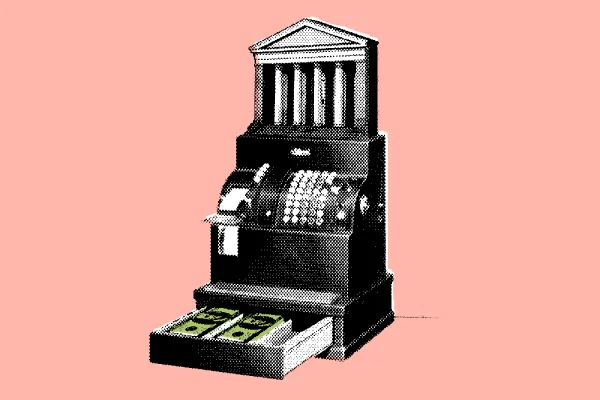More than any other policymaker, Federal Reserve Board chairman Alan Greenspan is the public face of the longest economic expansion in U.S. history.
By Deepak Gopinath
November 2000
Institutional Investor Magazine
More than any other policymaker, Federal Reserve Board chairman Alan Greenspan is the public face of the longest economic expansion in U.S. history. Were he suddenly to die, Senator John McCain joked during a Republican primary debate this spring, "God forbid, I would do like they did in the movie Weekend at Bernie's. I would prop him up and put a pair of dark glasses on him."
But who is the man behind the monetary policy?
In a well-researched, cleanly written biography, Justin Martin, the author of Greenspan: The Man Behind Money, tries to answer that question. Greenspan spoke to the author only briefly and on background. But after interviewing Greenspan's friends, colleagues, lovers, bosses and mentors (the latter group includes Henry Kissinger, Gerald Ford and Milton Friedman) and digging deep into the archives, Martin uncovers some fascinating material about the Fed chairman's early years. But the portrait, however detailed, remains incomplete: Martin never quite brings his subject to life.
Born in 1926, Greenspan grew up during the Depression in the Washington Heights section of upper Manhattan. He was 5 years old when his father, a businessman and economic consultant, moved out and his parents divorced. Herbert Greenspan had little contact with his son over the years, but when Alan was nine his father gave him a copy of a book he had written defending the New Deal. In the inscription he urged his son to study economics. What was the psychological legacy of this abbreviated father-son relationship? Martin offers no clues.
Music, not economics, became Greenspan's first passion. After high school Greenspan enrolled as a clarinetist at the prestigious Juilliard School in New York. A year later he dropped out to tour with a swing band. The bandleader, Henry Jerome, told Martin that Greenspan was no master of improvisation but a disciplined, talented section player who also served as the band's accountant. "Greenspan was never party to the partying," Jerome recalls. "In fact, as the band grew wilder, he grew straighter."
In 1952 Greenspan married Joan Mitchell, but the couple divorced after just ten months of marriage. "We never had a harsh word. We just decided it would be best to part," she told Martin.
Never unattached for long, Greenspan dated a succession of middle-aged media stars, including Barbara Walters. In 1997 the Fed chairman married his longtime companion, NBC political correspondent Andrea Mitchell.
Curiously, it was a chance encounter with a friend from Geenspan's year with the band that led to an introduction to Richard Nixon, which set in motion a political career that included stints as an adviser to presidents Nixon, Ford and Ronald Reagan, who appointed him Fed chief in 1987. Time and again, Martin suggests, great opportunities presented themselves to Greenspan, and the highly intelligent, politically astute economist made them work -- and then some.
According to Martin, Greenspan's expertise as a data-decoder helped define his pragmatic approach to making monetary policy. Martin describes Greenspan's use of paperboard as an economic indicator: "Such a prosaic indicator holds scant appeal for an academic economist. But it has the benefit of uncanny accuracy. Greenspan was forever adding to his toolbox of indicators. People who worked for him over the years were driven to distraction by the ever-increasing amount of data he would track."
While Martin's portrait is overwhelmingly positive, he does point out the unfortunate role Greenspan played in precipitating the savings and loan crisis of the 1980s. As a consultant in the mid-1980s, Greenspan wrote a letter to thrift regulators that gave Charles Keating's Lincoln Savings and Loan the green light to invest in real estate deals. Lincoln was later bailed out at a cost of $3 billion.
Martin devotes only the last third of his book to Greenspan's tenure as Fed chairman, which began with a bang in 1987: Black Monday struck just two months after Greenspan took office. He handled the crisis brilliantly, flooding the markets with liquidity. Within days the markets stabilized.
Few who knew Greenspan in his early days ever imagined that he would accomplish as much as he did. "In retrospect, friends suspect that the seeds of his ambition must have been present, only buried or invisible," writes Martin. "Perhaps the flip side of his modesty and introspection was the detachment and quiet inner drive necessary to succeed on a grand scale." Maybe Greenspan was less hungry than lucky, the right man in the right place at the right time -- as this longest expansion in U.S. history can attest.





